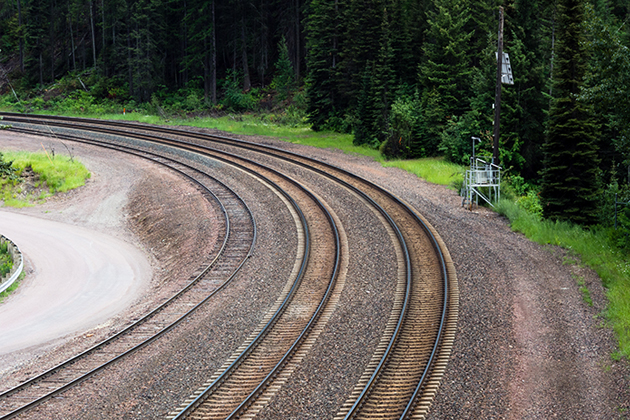 Earlier this month, Amtrak President Richard Anderson told the House railroads subcommittee that his company is on target to complete installation of positive train control (PTC) on the infrastructure it controls and on all of its equipment by the Dec. 31, 2018 federal deadline. He warned, however, that trains without PTC by the deadline could not use Amtrak’s tracks.
Earlier this month, Amtrak President Richard Anderson told the House railroads subcommittee that his company is on target to complete installation of positive train control (PTC) on the infrastructure it controls and on all of its equipment by the Dec. 31, 2018 federal deadline. He warned, however, that trains without PTC by the deadline could not use Amtrak’s tracks.
“We believe that PTC should ultimately be in place for all Amtrak routes and, as a matter of U.S. policy, PTC should be required for all passenger rail trips in America,” Anderson told the House Subcommittee on Railroads, Pipelines and Hazardous Materials.
PTC is designed to eliminate human error by using four components: GPS satellite data, onboard locomotive equipment, the dispatching office and wayside interface units. The system communicates with the train’s onboard computer, allowing it to audibly warn the engineer and display the train’s safe braking distance based on its speed, length, width and weight, as well as the grade and curvature of the track, according to railroad operator Metrolink.
If the engineer does not respond to the warning, the onboard computer will activate the brakes and safely stop the train.
Anderson’s testimony poses a challenge for major transportation providers like NJ Transit, whose trains run on the Northeast Corridor east of the Hudson River tunnels to New York City. Committee members have noted that NJ Transit “hasn’t even started” the process of installing PTC, while the company’s spokeswoman maintains that despite delays attributed to software compatibility, she believes they can meet the deadline. According to a Federal Railroad Administration progress report, 8% of NJ Transit’s locomotives and none of its tracks were updated with PTC as of the end of 2017.
After Congress passed the PTC Enforcement and Implementation Act of 2015 it also authorized the FAST Act, which allocated $199 million in PTC grant funding and specifically prioritized PTC installation projects for Railroad Rehabilitation and Improvement Financing funding. The Association of American Railroads estimates that freight railroads will spend $10.6 billion implementing PTC, with additional hundreds of millions each year to maintain. The American Public Transportation Association has estimated that the commuter and passenger railroads will have to spend nearly .
6 billion on PTC.
“Without PTC, the system is too vulnerable to single points of failure, many of which are dependent upon the memory of a single human being interacting with a big, complicated system,” Anderson said. “When an engineer loses situational awareness or forgets a rule, we have no systems to assist them and help them prevent that error.”
He also noted that Amtrak is taking additional steps, such as installing inward-facing cameras. “These cameras monitor locomotive and engineer performance and are installed in Amtrak trains along routes in the northeast, midwest, and west and we are actively working to install them on Amtrak trains nationwide. Reviewing the data from these cameras, coupled with the data from our efficiency testing programs, provides us an excellent view of operational issues to be addressed in future training programs.”
Efforts to upgrade train technology has been a nationwide priority. The most recent major derailment occurred on Dec. 18, 2017 when an Amtrak train derailed near Tacoma, Washington, killing three passengers and injuring about 100. That crash was the result of excessive speed in a steep curve, which experts suggested could have been prevented with PTC’s automatic braking technology. Amtrak Train No. 501, on its inaugural run, was traveling 80 miles per hour in an area limited to 30 miles per hour when it derailed on an overpass, sending the train’s 12 coaches and one of its two engines careening onto the highway below.
As previously reported in Risk Management, a similar derailment in Philadelphia in May 2015 that killed eight, was also blamed on excessive speed and could have been avoided if PTC had been in place.
Similar Posts:
- Latest Amtrak Derailment Could Have Been Prevented
- LIRR Misses Critical Juncture for Positive Train Control
- Could Train Control Technology Have Prevented the Amtrak Derailment?
- NTSB Searching for Clues in Hoboken NJ Transit Crash
- NTSB’s Most Wanted Improvements Reflect Major Transportation Disasters of 2018
